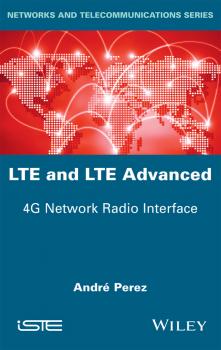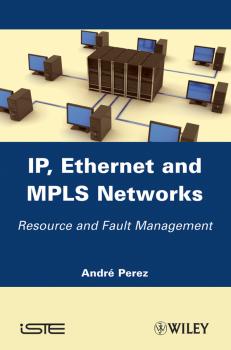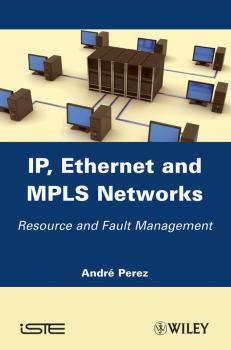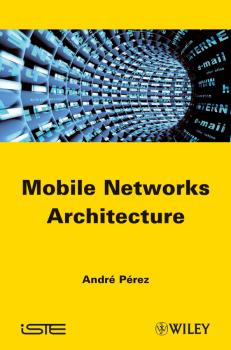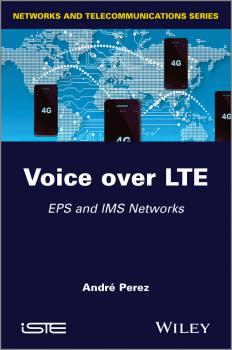ТОП просматриваемых книг сайта:
Andre Perez
Список книг автора Andre PerezАннотация
The adoption of smartphones has had as a corollary the use of services that require streaming, such as video streaming, which is a constraint for the 4G mobile network. The integration of the network of Wi-Fi hotspots deployed by the operators adds capacity to the 4G mobile network. The use of Wi-Fi technology in carrier networks is the result of developments coordinated by the IEEE, WFA and WBA standardization bodies. For its part, the 3GPP standardization body has been working to integrate Wi-Fi technology into the 4G mobile network. The first part of this book presents the characteristics of the Wi-Fi radio interface. The different IEEE 802.11b / g / n / ac physical layers characterize the implementation in the 2.4 GHz ISM frequency bands and U- NII at 5 GHz. The MAC layer defines a number of media access procedures such as scanning, associating, or transferring data. The second part of this book deals with the architecture of the 4G network based on the Wi-Fi interface. This architecture defines several models corresponding, on the one hand, to Wi-Fi access controlled or not, On the other hand, to a handover controlled by the network or by the mobile. The integration of Wi-Fi technology resulted in a redefinition of attachment and session set-up procedures. Smartphones have the ability to activate simultaneously the two radio interfaces, LTE and Wi-Fi, which allows to direct certain services to one and / or the other of the interfaces. The ANDSF and HotSpot 2.0 functions provide the mobile with rules for network selection and traffic control to determine which traffic is to be routed to what type of interface.
Аннотация
This book introduces the security mechanisms deployed in Ethernet, Wireless-Fidelity (Wi-Fi), Internet Protocol (IP) and MultiProtocol Label Switching (MPLS) networks. These mechanisms are grouped throughout the book according to the following four functions: data protection, access control, network isolation, and data monitoring. Data protection is supplied by data confidentiality and integrity control services. Access control is provided by a third-party authentication service. Network isolation is supplied by the Virtual Private Network (VPN) service. Data monitoring consists of applying rules to data in order to authorize its transfer or detect attacks. The chapters of the book cover cryptography, 802.1x mechanism, WPA mechanisms, IPSec mechanism, SSL/TLS/DTLS protocols, network management, MPLS technology, Ethernet VPN, firewalls and intrusion detection.
Аннотация
This book presents the architecture of two networks that make up the backbone of the telephone service VoLTE and video service ViLTE. The 4G mobile network makes it possible to construct bearers through which IP packets, containing either telephone signals (SIP, SDP) or voice or video media (RTP stream), are transported. The IMS network performs the processing of the telephone signal to provide VoLTE and ViLTE services, including call routing and the provision of additional services. Different procedures are described: the set-up and termination of a session, interconnection with third-party networks, roaming and intra-system handover. The inter-system handover PS-CS is a special case that occurs when the mobile loses 4G network coverage over the course of a session. The e-SRVCC mechanism enables continuity of the service during the switch of the telephone communication to the 2G or 3G networks. The SMS service for short messages, which is a special telephone service in itself, is provided by two structures, one relying on the IMS network, and a second on the CSFB functionality.
Аннотация
This book presents the technical characteristics of the two radio network interfaces of mobile 4G, LTE and LTE Advanced, based on Release 8, 9 and 10 of the 3GPP specifications. Points covered include a detailed description of various components of the radio interface. RRC signaling messages used to establish the connection, enabling the security, the paging, the establishment and the release of dedicated and default support and the handover. The PDCP ensures the security of the transmission and allows the recovery during handover and the compression of the headers. The RLC protocol defines the transmission modes with or without acknowledgment. The MAC protocol determines the random access, the data transfer, the timing advance, the scheduling and the discontinuous reception. The physical layer includes a description of the methods of multiplexing (time, frequency and space) and the various signals and physical channels.
Аннотация
This book summarizes the key Quality of Service technologies deployed in telecommunications networks: Ethernet, IP, and MPLS. The QoS of the network is made up of two parts: fault and resource management. Network operation quality is among the functions to be fulfilled in order to offer QoS to the end user. It is characterized by four parameters: packet loss, delay, jitter or the variation of delay over time, and availability. Resource management employs mechanisms that enable the first three parameters to be guaranteed or optimized. Fault management aims to ensure continuity of service.
Аннотация
This book summarizes the key Quality of Service technologies deployed in telecommunications networks: Ethernet, IP, and MPLS. The QoS of the network is made up of two parts: fault and resource management. Network operation quality is among the functions to be fulfilled in order to offer QoS to the end user. It is characterized by four parameters: packet loss, delay, jitter or the variation of delay over time, and availability. Resource management employs mechanisms that enable the first three parameters to be guaranteed or optimized. Fault management aims to ensure continuity of service.
Аннотация
This book explains the evolutions of architecture for mobiles and summarizes the different technologies: – 2G: the GSM (Global System for Mobile) network, the GPRS (General Packet Radio Service) network and the EDGE (Enhanced Data for Global Evolution) evolution; – 3G: the UMTS (Universal Mobile Telecommunications System) network and the HSPA (High Speed Packet Access) evolutions: – HSDPA (High Speed Downlink Packet Access), – HSUPA (High Speed Uplink Packet Access), – HSPA+; – 4G: the EPS (Evolved Packet System) network. The telephone service and data transmission are the two main services provided by these networks. The evolutions are fundamentally dictated by the increase in the rate of data transmission across the radio interface between the network and mobiles. This book is intended as a readily understandable support to help students and professionals wishing to quickly acquire the main concepts of networks for mobiles understand the technologies deployed.
Аннотация
Voice over LTE (Long Term Evolution) presents the mechanisms put in place in 4G mobile networks for the transportation of IP packets containing voice data and telephone signaling, as well as the technologies used to provide a telephone service in the IMS (IP Multimedia Sub-system) network. Despite the difficulty connected to the handover of the 4G network to the 2G/3G network, a telephone communication will not be established on the 4G network. This book analyzes the technologies that have been put in place, such as CSFB (Circuit Service FallBack), an interim solution that enables a mobile connected to the 4G network to receive an alert transmitted by the 2G/3G network. The book also goes on to develop the SIP (Session Information Protocol) on which the telephone signaling transferred by the 4G network is based, the IMS network that provides the service and defines the routing, the SRVCC (Single Radio Voice Call Continuity) mechanism that maintains communication and the TAS (Telephony Application Server) that supplies supplementary services. Contents 1. The EPS Network. 2. The LTE Interface. 3. The CSFB Function. 4. SIP and SDP Protocols. 5. The IMS Network. 6. Telephone Services. 7. The SRVCC Function. About the Authors André Perez is a consultant and teacher in networks and telecommunications. He works with industrialists and operators regarding architecture studies and leads training on the 4G and IMS networks for NEXCOM.




